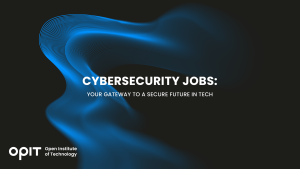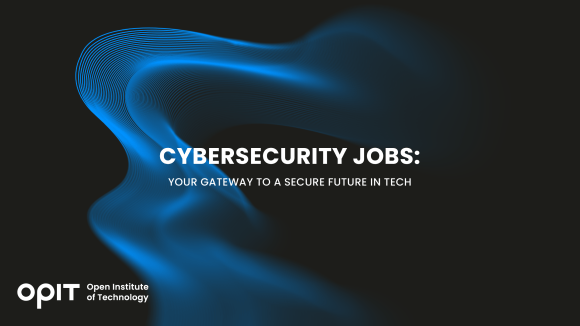

Cybersecurity has been a necessity ever since the advent of digital technology. However, decades ago, few would’ve envisaged just how much demand would eventually grow. Information technology is now such an integral part of modern life, everyone needs to safeguard their digital footprint.
As a result, demand for cybersecurity professionals has never been greater. Let’s take a closer look at both the governmental and private sector positions now available.
The Landscape of Cybersecurity Jobs
The roles within the scope of cybersecurity are broad but united by a common goal: protecting digital assets. Each cybersecurity job relies on another for a comprehensive cyber defense system. Here are some examples:
- Security analysts scrutinize and fortify network defenses.
- Ethical hackers preemptively probe systems for vulnerabilities.
- Incident responders who manage the aftermath of security breaches.
- Security architects who design robust security structures.
- Compliance officers who verify and promote adherence to data protection laws and regulations.
- Malware analysts analyze the nature of malicious software to develop defenses against it.
- Network security engineers take care of the security of an organization’s network from threats and vulnerabilities by installing firewalls and running tests, among other activities.
- Cybersecurity consultants share expert advice to organizations on how to protect their digital assets and follow regulations.
- Information security managers oversee the operations of an organization’s information security department.
- Penetration testers, much like ethical hackers, are authorized to attack systems to find vulnerabilities from an adversary’s perspective.
- Forensic computer analysts, the “detectives” of cybersecurity, investigate cybercrimes by analyzing digital evidence to track down perpetrators and find out the details of a breach.
- Chief information security officer (CISO) is a high-ranking executive responsible for an organization’s overall security strategy against cyber threats.
These professionals are collectively in high demand across various industries. Healthcare, government, finances, and technology, to name but a few. All these industries now depend on valuable documents and client information stored in local databases or the cloud. They also typically boast websites, for both client services and information, which may be targets for malicious actors and attackers. This diversity underscores the universal relevance of cybersecurity, transcending industry boundaries.
Qualifications and Skills for Cybersecurity Careers
Education, certifications, and hands-on experience collectively underpin the path to a cybersecurity job. It’s worth knowing that for you to succeed in the field, you don’t absolutely need a specialized degree, though it certainly helps. However, a bachelor’s degree in computer science, information technology, or a specialist cybersecurity qualification will give you a strong foundation.
Still, the field also places a premium on specialized certifications. Certifications such as CompTIA Security+, Certified Information Systems Security Professional (CISSP), Certified Ethical Hacker (CEH), along with OPIT’s master’s degree in cybersecurity are accolades that signify a professional’s know-how in the field. As such, they will likely put you ahead of the competition for a job position. The competition for cybersecurity jobs is strong, so try and obtain all the qualifications you can get.
OPIT’s MSc in Enterprise Cybersecurity program is one of the best examples of the integration of various fields that link together to create comprehensive cybersecurity measures. It combines theoretical knowledge with practical application, such as simulated cyberattacks, or problems modeled after real-world cyber emergency situations. The program covers a broad spectrum of topics, such as network security, threat intelligence, and legal aspects and ethical considerations.
One of the most valuable cybersecurity skills isn’t one that could be passed down through books or traditional lectures. That skill is strategic thinking. Your strategic mind must be ready to come up with actionable solutions in the heat of the moment, possibly as a response to a situation you’ve never seen before. For that reason, expect this ability to be scrutinized at a cybersecurity job interview.
Building a Career in Cybersecurity: Here’s How You Do It
As mentioned, building a career in cybersecurity takes continuous learning and adaptation, even after you land the job. After laying groundwork for understanding the field through formal education and certification, follow up with internships and entry-level positions. This way, you’ll get invaluable hands-on experience in scenarios that aren’t simulated, rather scenarios with real-life consequences. This is your chance to prove yourself and put what you’ve learned to the test while making a difference for genuine clients or employers.
OPIT offers you a curriculum that balances academic rigor with practical relevance. Students taking this course engage in project-based learning, simulations, and internships, gaining exposure to the challenges they’ll face in their professional careers. Furthermore, OPIT’s strong industry connections mean that students have a one-of-a-kind opportunity to network with seasoned cybersecurity professionals and organizations. This kind of access opens doors to possible quick employment opportunities once you’re out of the program.
Trends in Cybersecurity Employment
Technological advancements drive bad actors to find new vulnerabilities to exploit. For example, the recent rise of AI and machine learning has enabled more sophisticated threat detection and response mechanisms. However, these technologies have their weak spots, many of which are substantially different from what cybersecurity specialists are used to handling.
Recent reports warn of “worms” that could be injected into language models to fish for users’ personal data. Another interesting phenomenon is a tool that claims to “poison” an AI’s training data against training on copyrighted art. In the wrong hands, this could cause significant damage.
Furthermore, “traditional” malware isn’t going anywhere, particularly with the rise of ransomware and identity theft in the last few years. The same goes for malicious software installing crypto miners without a user’s consent. The demand for cybersecurity professionals will grow exponentially, with the Bureau of Labor Statistics projecting a 31% increase in employment of information security analysts from 2019 to 2029. A rate much higher than the average for other occupations.
Security for All
The field of cybersecurity jobs is a promising career path for those looking to make a significant impact in the tech industry. As digital threats proliferate, the need for skilled professionals to combat them has never been greater. OPIT’s cybersecurity programs are at the forefront of this challenge, giving students the knowledge, skills, and insights needed to secure a rewarding future career.
Related posts

Source:
- Agenda Digitale, published on November 25th, 2025
In recent years, the word ” sustainability ” has become a firm fixture in the corporate lexicon. However, simply “doing no harm” is no longer enough: the climate crisis , social inequalities , and the erosion of natural resources require a change of pace. This is where the net-positive paradigm comes in , a model that isn’t content to simply reduce negative impacts, but aims to generate more social and environmental value than is consumed.
This isn’t about philanthropy, nor is it about reputational makeovers: net-positive is a strategic approach that intertwines economics, technology, and corporate culture. Within this framework, digitalization becomes an essential lever, capable of enabling regenerative models through circular platforms and exponential technologies.
Blockchain, AI, and IoT: The Technological Triad of Regeneration
Blockchain, Artificial Intelligence, and the Internet of Things represent the technological triad that makes this paradigm shift possible. Each addresses a critical point in regeneration.
Blockchain guarantees the traceability of material flows and product life cycles, allowing a regenerated dress or a bottle collected at sea to tell their story in a transparent and verifiable way.
Artificial Intelligence optimizes recovery and redistribution chains, predicting supply and demand, reducing waste and improving the efficiency of circular processes .
Finally, IoT enables real-time monitoring, from sensors installed at recycling plants to sharing mobility platforms, returning granular data for quick, informed decisions.
These integrated technologies allow us to move beyond linear vision and enable systems in which value is continuously regenerated.
New business models: from product-as-a-service to incentive tokens
Digital regeneration is n’t limited to the technological dimension; it’s redefining business models. More and more companies are adopting product-as-a-service approaches , transforming goods into services: from technical clothing rentals to pay-per-use for industrial machinery. This approach reduces resource consumption and encourages modular design, designed for reuse.
At the same time, circular marketplaces create ecosystems where materials, components, and products find new life. No longer waste, but input for other production processes. The logic of scarcity is overturned in an economy of regenerated abundance.
To complete the picture, incentive tokens — digital tools that reward virtuous behavior, from collecting plastic from the sea to reusing used clothing — activate global communities and catalyze private capital for regeneration.
Measuring Impact: Integrated Metrics for Net-Positiveness
One of the main obstacles to the widespread adoption of net-positive models is the difficulty of measuring their impact. Traditional profit-focused accounting systems are not enough. They need to be combined with integrated metrics that combine ESG and ROI, such as impact-weighted accounting or innovative indicators like lifetime carbon savings.
In this way, companies can validate the scalability of their models and attract investors who are increasingly attentive to financial returns that go hand in hand with social and environmental returns.
Case studies: RePlanet Energy, RIFO, and Ogyre
Concrete examples demonstrate how the combination of circular platforms and exponential technologies can generate real value. RePlanet Energy has defined its Massive Transformative Purpose as “Enabling Regeneration” and is now providing sustainable energy to Nigerian schools and hospitals, thanks in part to transparent blockchain-based supply chains and the active contribution of employees. RIFO, a Tuscan circular fashion brand, regenerates textile waste into new clothing, supporting local artisans and promoting workplace inclusion, with transparency in the production process as a distinctive feature and driver of loyalty. Ogyre incentivizes fishermen to collect plastic during their fishing trips; the recovered material is digitally tracked and transformed into new products, while the global community participates through tokens and environmental compensation programs.
These cases demonstrate how regeneration and profitability are not contradictory, but can actually feed off each other, strengthening the competitiveness of businesses.
From Net Zero to Net Positive: The Role of Massive Transformative Purpose
The crucial point lies in the distinction between sustainability and regeneration. The former aims for net zero, that is, reducing the impact until it is completely neutralized. The latter goes further, aiming for a net positive, capable of giving back more than it consumes.
This shift in perspective requires a strong Massive Transformative Purpose: an inspiring and shared goal that guides strategic choices, preventing technology from becoming a sterile end. Without this level of intentionality, even the most advanced tools risk turning into gadgets with no impact.
Regenerating business also means regenerating skills to train a new generation of professionals capable not only of using technologies but also of directing them towards regenerative business models. From this perspective, training becomes the first step in a transformation that is simultaneously cultural, economic, and social.
The Regenerative Future: Technology, Skills, and Shared Value
Digital regeneration is not an abstract concept, but a concrete practice already being tested by companies in Europe and around the world. It’s an opportunity for businesses to redefine their role, moving from mere economic operators to drivers of net-positive value for society and the environment.
The combination of blockchain, AI, and IoT with circular product-as-a-service models, marketplaces, and incentive tokens can enable scalable and sustainable regenerative ecosystems. The future of business isn’t just measured in terms of margins, but in the ability to leave the world better than we found it.

Source:
- Raconteur, published on November 06th, 2025
Many firms have conducted successful Artificial Intelligence (AI) pilot projects, but scaling them across departments and workflows remains a challenge. Inference costs, data silos, talent gaps and poor alignment with business strategy are just some of the issues that leave organisations trapped in pilot purgatory. This inability to scale successful experiments means AI’s potential for improving enterprise efficiency, decision-making and innovation isn’t fully realised. So what’s the solution?
Although it’s not a magic bullet, an AI operating model is really the foundation for scaling pilot projects up to enterprise-wide deployments. Essentially it’s a structured framework that defines how the organisation develops, deploys and governs AI. By bringing together infrastructure, data, people, and governance in a flexible and secure way, it ensures that AI delivers value at scale while remaining ethical and compliant.
“A successful AI proof-of-concept is like building a single race car that can go fast,” says Professor Yu Xiong, chair of business analytics at the UK-based Surrey Business School. “An efficient AI technology operations model, however, is the entire system – the processes, tools, and team structures – for continuously manufacturing, maintaining, and safely operating an entire fleet of cars.”
But while the importance of this framework is clear, how should enterprises establish and embed it?
“It begins with a clear strategy that defines objectives, desired outcomes, and measurable success criteria, such as model performance, bias detection, and regulatory compliance metrics,” says Professor Azadeh Haratiannezhadi, co-founder of generative AI company Taktify and professor of generative AI in cybersecurity at OPIT – the Open Institute of Technology.
Platforms, tools and MLOps pipelines that enable models to be deployed, monitored and scaled in a safe and efficient way are also essential in practical terms.
“Tools and infrastructure must also be selected with transparency, cost, and governance in mind,” says Efrain Ruh, continental chief technology officer for Europe at Digitate. “Crucially, organisations need to continuously monitor the evolving AI landscape and adapt their models to new capabilities and market offerings.”
An open approach
The most effective AI operating models are also founded on openness, interoperability and modularity. Open source platforms and tools provide greater control over data, deployment environments and costs, for example. These characteristics can help enterprises to avoid vendor lock-in, successfully align AI to business culture and values, and embed it safely into cross-department workflows.
“Modularity and platformisation…avoids building isolated ‘silos’ for each project,” explains professor Xiong. “Instead, it provides a shared, reusable ‘AI platform’ that integrates toolchains for data preparation, model training, deployment, monitoring, and retraining. This drastically improves efficiency and reduces the cost of redundant work.”
A strong data strategy is equally vital for ensuring high-quality performance and reducing bias. Ideally, the AI operating model should be cloud and LLM agnostic too.
“This allows organisations to coordinate and orchestrate AI agents from various sources, whether that’s internal or 3rd party,” says Babak Hodjat, global chief technology officer of AI at Cognizant. “The interoperability also means businesses can adopt an agile iterative process for AI projects that is guided by measuring efficiency, productivity, and quality gains, while guaranteeing trust and safety are built into all elements of design and implementation.”
A robust AI operating model should feature clear objectives for compliance, security and data privacy, as well as accountability structures. Richard Corbridge, chief information officer of Segro, advises organisations to: “Start small with well-scoped pilots that solve real pain points, then bake in repeatable patterns, data contracts, test harnesses, explainability checks and rollback plans, so learning can be scaled without multiplying risk. If you don’t codify how models are approved, deployed, monitored and retired, you won’t get past pilot purgatory.”
Of course, technology alone can’t drive successful AI adoption at scale: the right skills and culture are also essential for embedding AI across the enterprise.
“Multidisciplinary teams that combine technical expertise in AI, security, and governance with deep business knowledge create a foundation for sustainable adoption,” says Professor Haratiannezhadi. “Ongoing training ensures staff acquire advanced AI skills while understanding associated risks and responsibilities.”
Ultimately, an AI operating model is the playbook that enables an enterprise to use AI responsibly and effectively at scale. By drawing together governance, technological infrastructure, cultural change and open collaboration, it supports the shift from isolated experiments to the kind of sustainable AI capability that can drive competitive advantage.
In other words, it’s the foundation for turning ambition into reality, and finally escaping pilot purgatory for good.
Have questions?
Visit our FAQ page or get in touch with us!
Write us at +39 335 576 0263
Get in touch at hello@opit.com
Talk to one of our Study Advisors
We are international
We can speak in:


